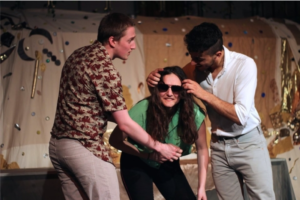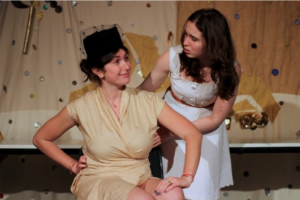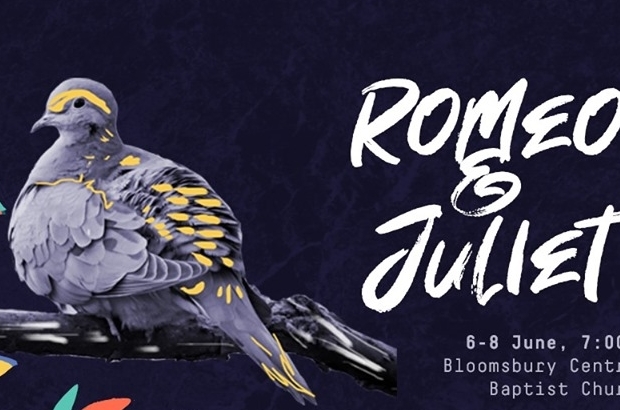SOPHIE CUNDALL reviews UCL Drama Society’s Romeo and Juliet.
From the moment you walk in through the creaking doors of the 19th century gothic church in which UCL drama’s Romeo and Juliet is staged, you know it will be something special, and quite unlike any other version of this canonic play. As you settle into a wooden pew, you’re greeted with the soft sound of sobbing from a mascara-streaked face. The grief element of the play is immediately pronounced, particularly when you realise it’s actually Benvolio on stage, not Juliet or her Romeo. This also nicely introduces another refreshing element to the piece: the casting tosses gender aside, a delightful, and actually quite Shakespearean, twist on the tale that adds to the plethora of modern approaches that make it a fresh and current version.

The performance itself from the actors is incredibly captivating: the pace never drops, and they arguably could carry the story and its emotion solely with their delivery of the lines and with their physicality. From the battling bodies that made up the fight scenes to the highly comical caricature of the nurse, the cast is entertaining and professional. However, this makes the setting of 60s Brazil – which isn’t immediately obvious and is only communicated through music – seem a little superfluous. The church setting is imposing enough in itself and some of the most powerful scenes come performed on the balcony under the heavy black cross, tall and neon soaked, reminding us of Baz Lurhman’s retelling. The colourful, metallic set on the first level adds a level of confusion and noise which is most effective in the party scene, but takes away somewhat in the more gentle scenes between the lovers.

This contrast between the two halves of the stage does, however, add the possibility to create some compelling split scenes. This serves to underline and explore the relationships between characters and scenarios in a new and exciting way. The contrast between the cold, clean balcony with the aforementioned cross where businesslike meetings about marriages are whispered, and the intense, passionate scenes that take place amongst the favela colours and recycled set highlights this pulsing emotion. In terms of mise-en-scène, the use of song and music in the play is also particularly effective. The live performance of a haunting melody sets the stage beautifully for Romeo and Juliet’s first meeting, the choreography in the party scene is visually arresting and very atmospheric. The music accompanying that first scene with a tearful Benvolio also captures the mood perfectly.
This production is well worth a watch: the costume and elements of the setting make it relevant and relatable for a modern audience. If nothing else, it is worth seeing for the actors’ prowess: not a line is fluffed, and a very real emotion radiates from the stage. It is a striking and moving performance, and the setting of a church makes it a real experience, something really quite extraordinary.
Romeo and Juliet ran from the 6-8th June at Bloomsbury Baptist Church, more information here
Featured imaged courtesy of UCL Drama Society





